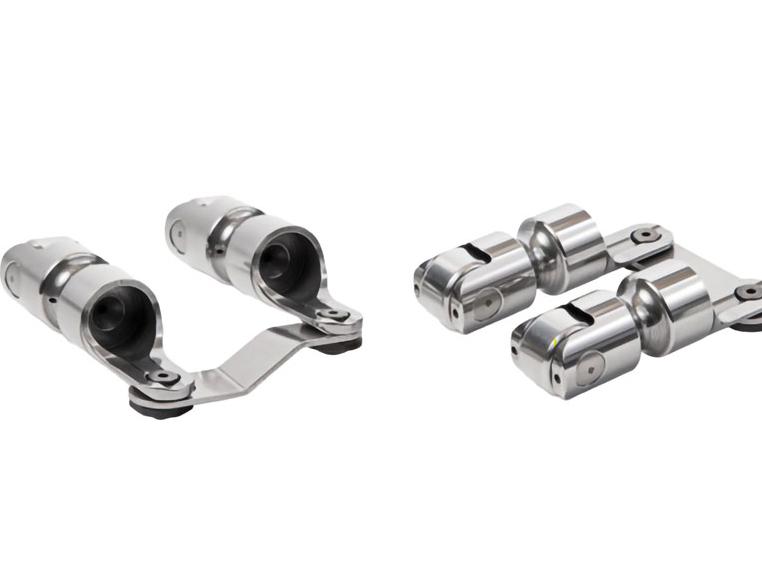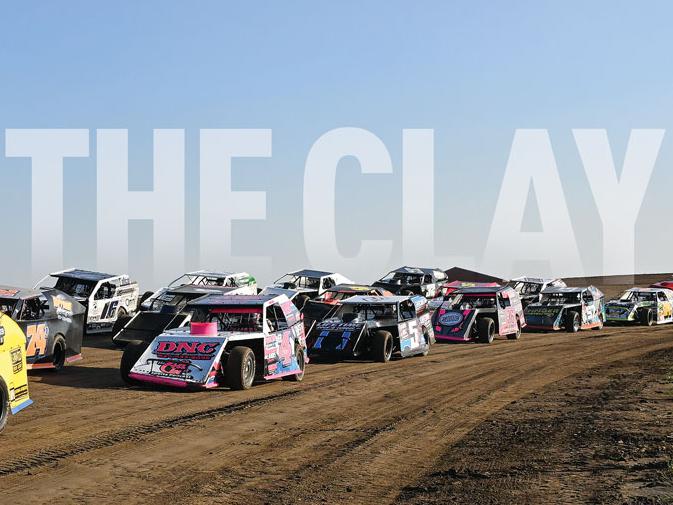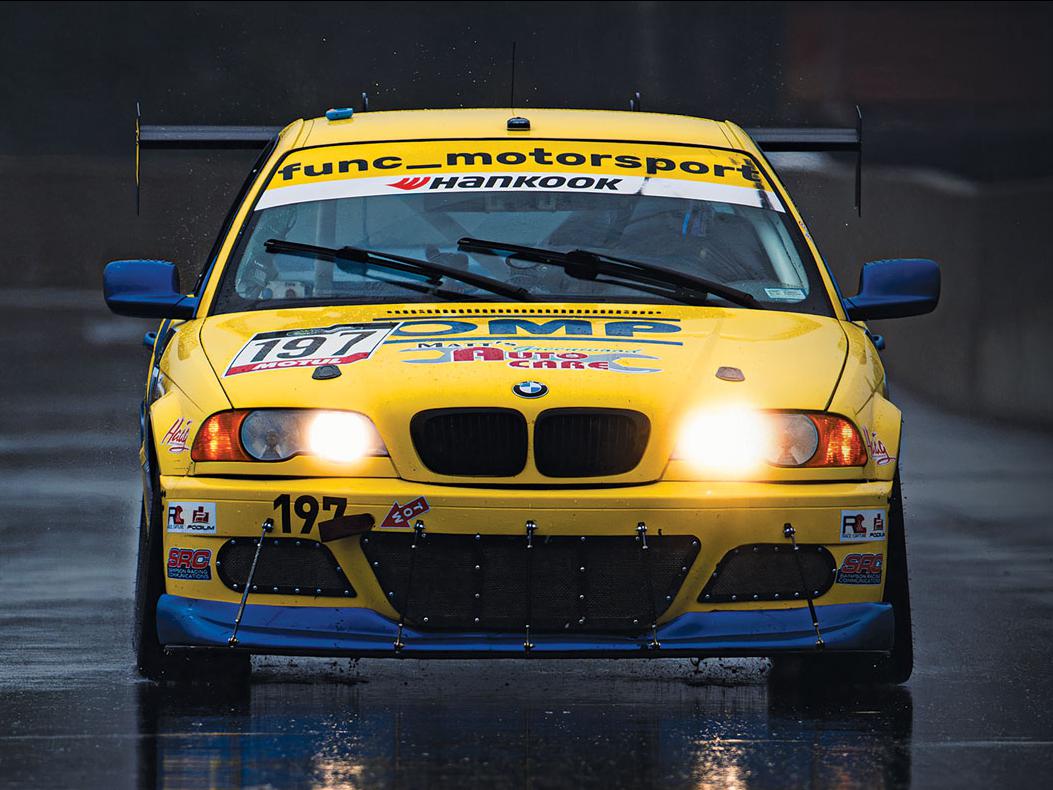Local Variables
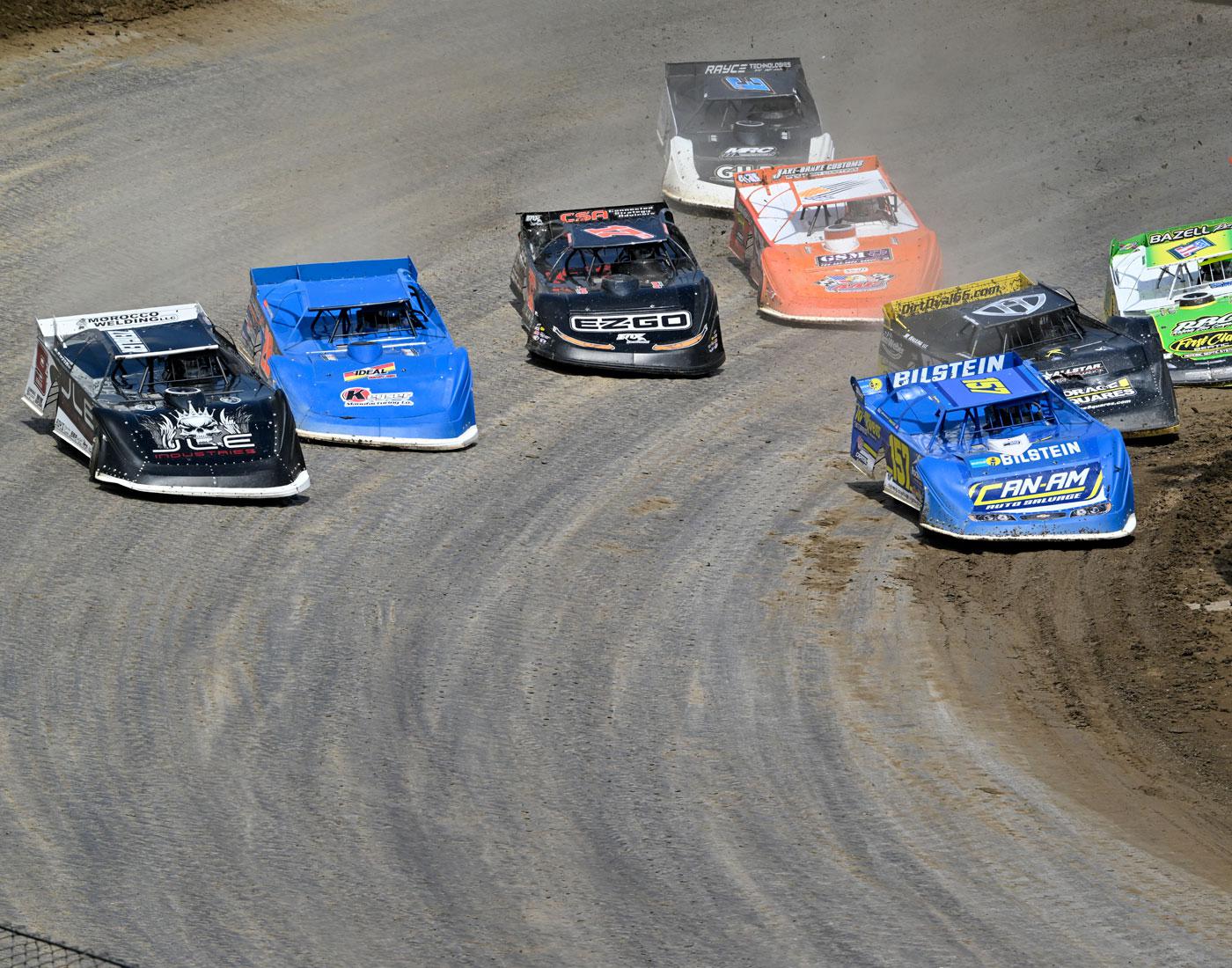
From the red clay of Georgia to Ohio’s black dirt, late model racers across the country must adapt to conditions that fluctuate by region or, in some cases, within the states themselves.
Bull rings and half-miles. Clay, sand, and gumbo. Crate engines and open motors. A 12-car field. A 30-car field. All these characteristics and many more make up dirt late model racing in the USA.
To the casual fan, all dirt late model racing may look the same—that’s why one series boldly went topless (more on that later). But series promoters and the racers themselves know that each area of the country has its idiosyncrasies. A traveling team has to be adaptable to meet different circumstances, not just from region to region, but even from track to track in the same state.
THE NORTHEAST
“Dirt late model racing in Pennsylvania is pretty healthy overall,” said Chris Zuver of the Jay’s Automotive United Late Model Series (ULMS) based in Pittsburgh, Pennsylvania. “We have a lot of tracks you can go to, and we have some race tracks that are paying some really good money.”
Three late model classes are the most popular in the area. “We do a super late model class, same as the Outlaws and the Lucas Oil Series—it’s just more regional Saturday night racers,” Zuver said. “There’s also a 604 crate motor class, which is really big and has come on strong in the last 10–12 years. Down in central Pennsylvania, they have a steel-block limited late class that’s a really strong class. From the open motors to the crate class, all have pretty healthy car counts, depending on what track you go to and the payout. You can have anywhere from 12 late models in a night to 30. Central Pennsylvania is really stepping up its late model program, especially Port Royal. When we go to Port Royal, it can be 40–50 cars, depending on the weekend.”
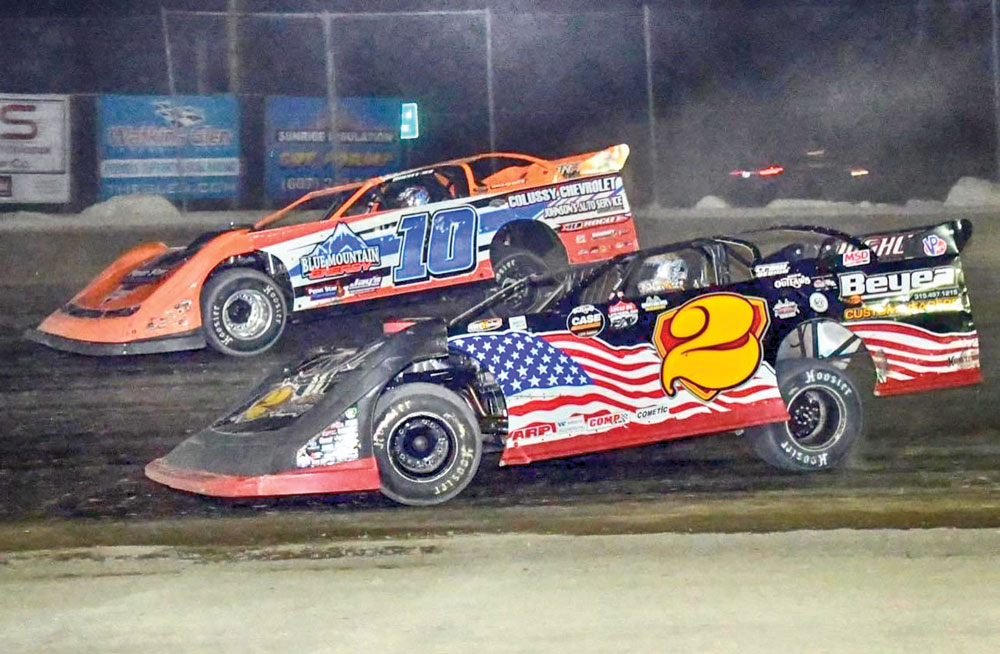
Track surfaces vary according to where the track is in the state, Zuver said. “Up in northern Pennsylvania most of our tracks are pretty dry and slick. We don’t have too many cushions. Then we’ll go to a couple central Pennsylvania tracks—basically they’re sprint car tracks—where the cushion is 12–18 inches high. Central Pennsylvania is all red clay, while the northern Pennsylvania area is more or less a sandy, gray clay mixture that doesn’t lay much rubber down like the red clay race tracks do.”
Zuver believes “we’ve had some of the toughest racers around come out of our region, not just recently but over the last two or three decades. We’ve had Hall of Fame racers come out of our area, like Chub Frank, Gary Stuhler, Lynn Geisler, and Rick Eckert. They raced in central and western Pennsylvania. They grew up there, they cut their teeth there, and they became professional racers from there.
“I have two drivers on the World of Outlaws tour that are past ULMS champions, so our region is a really strong region when the national series come into Pennsylvania,” Zuver continued. “They know they have to face some tough competition. The weekly regional racer can win a national event at their home race track. They have proven it time and time again. I am proud to be part of that region.”
THE MIDWEST
“The first thing you think of when thinking of late model racing in different regions of the country is the dirt,” said Bobby Pierce, currently on the World of Outlaws tour; his Bobby Pierce Racing is headquartered in Oakwood, Illinois. “Once you get to the Ohio/Pennsylvania area, we always just call it Ohio dirt—it’s loose brown. When you get to Illinois, Iowa, and Minnesota, most of the time it’s pretty black, almost completely black. You can feel it racing on different types of dirt, how it will make the car handle, your entrance to the corner, just everything as far as the driver’s feel of the dirt right underneath them. You have to have different driving styles for those different types of dirt.”
“Midwest dirt is completely different,” agreed Kelley Carlton. Based in Woodruff, South Carolina, Carlton is race director for the Ultimate Super Late Model Series and works with the FloRacing Night in America series. “It’s more of a black dirt, very rich in nutrients, which is why agriculture is so good in the Midwest. It races really well, holds moisture really well, compacts really well. It’s not as sandy, not as abrasive, doesn’t take rubber quite like our places in the South do.”
In the Midwest, “you have to be prepared for anything,” Carlton said. “You can have three-wide racing, it can be super sloppy wet, or a place like Fairbury [Speedway in Illinois] can stay pretty tacky throughout the night but will slick up in places, too.”
“You can kind of narrow it down to the states,” Pierce added. “In Tennessee, you know nine times out of 10 you’re going to be racing on a very banked race track. If you’re racing somewhere in Illinois, you know it’s probably going to be a little quarter-mile bullring. If you’re racing in Iowa, they’re really known for their big half-mile flat tracks.”
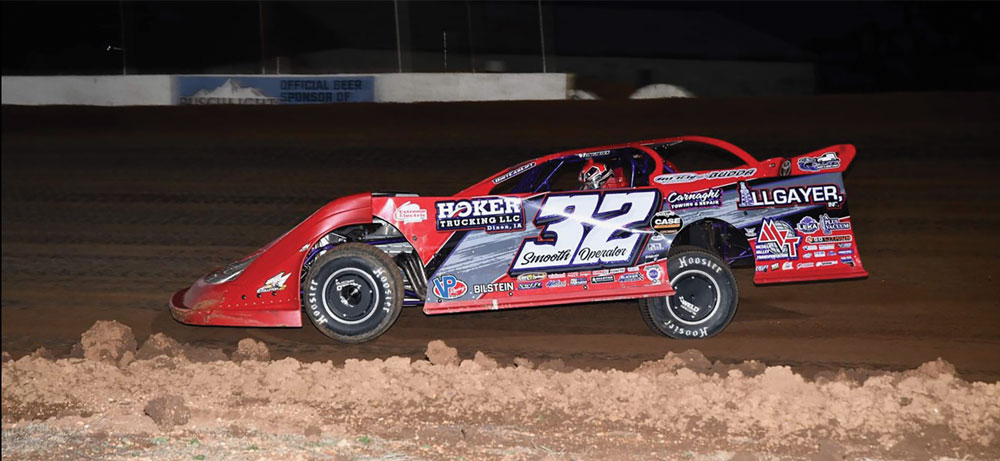
Hall of Fame driver Ronnie Johnson, the Chattanooga Flash, said that when he raced in the Midwest, the tracks would “typically start out with a lot of traction in them early on. A lot of those tracks that we would go to in Indiana and Illinois were pretty small, so you had all these cars on this one little piece of real estate.
“The track really changed throughout the night and really goes away,” Johnson said. “By the end of the night, we’d wind up racing clear in the infield, like in the grass. You’d find more traction in the grass than you could on the race track because it’d get so slick. When we used to go to Brownstown [Indiana], I’d see guys make time actually driving the right-side wheels off the race track going down the straightaways because there was still traction out there, even though it looked like they were off the track.”
Track conditions dictate the tune, as well. For a track like Fairbury “that stays pretty wet all the time, you want as much horsepower as you can get to the ground,” Carlton said. “Or if you go to a place like Knoxville for the Late Model Nationals, you’re on the wood constantly. You need all you can get and then some until it starts to slick off at the end of the night.”
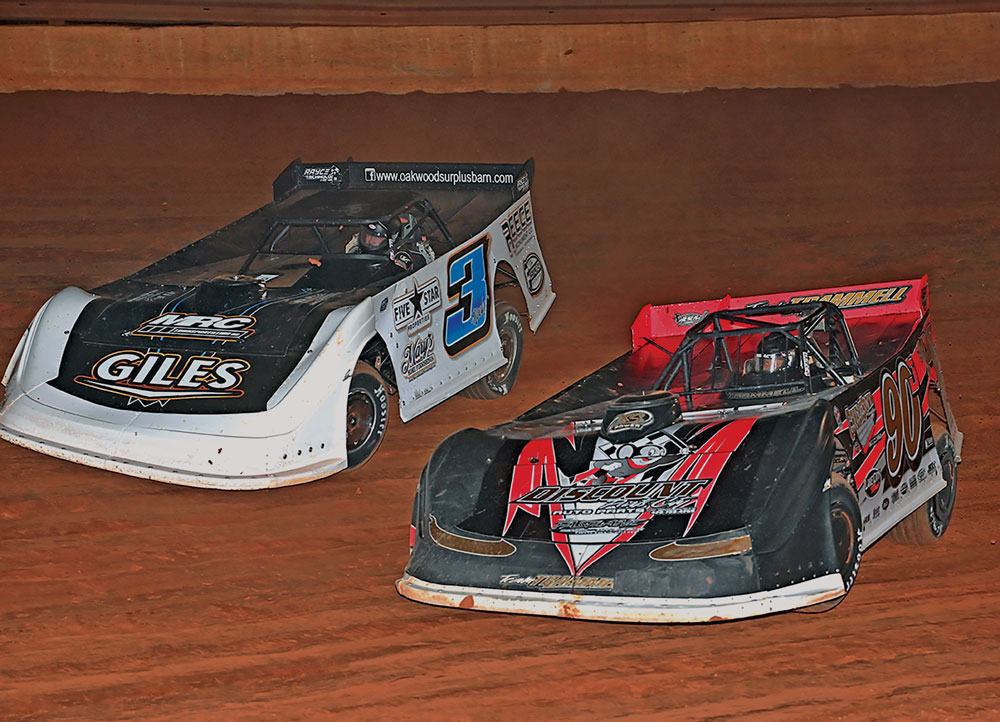
Pierce said the different areas of the Midwest support different dirt late model classes. “If you head to somewhere in Illinois, you’ll have super late models, then two or three different classes of modified. Farther out into Iowa, you’ll start to get into the IMCA region, so there’ll be IMCA cars. Or if you go into Texas, or maybe like Oklahoma, you’ll be racing with USMTS modifieds. It’s cool to see the different scenery that you get from most places.”
Car counts, Pierce said, “kind of vary. A good car count starts if a track has a good local following of cars. You can go somewhere that has a great car count, then you can go somewhere the next day that’s only 30 minutes away, and they don’t have a good car count at all. It always seems like when we go somewhere to race, if it’s a track that doesn’t have late model racing on a local weekly basis and doesn’t have a local following, then when you go there it’s mostly your guys running the series.”
THE SOUTH & SOUTHEAST
“The most glaring difference” between the rest of the country and the South, Carlton said, “is that the formats are different. Compared to the Northeast or the Midwest, the South is its own world. Our formats have a little less racing because of the track surfaces and the numbers of classes.”
In other parts of the country, the dirt late models “will qualify, then go to a heat race, and then transfer a certain number of cars from the heat race. Everyone else will go to a B Main or Last Chance race, which will also transfer another amount of cars to the A Main.” By contrast, in a Southern Super Late Model series, “they’ll take a certain number of cars from qualifying directly to the A Main, and all other cars to a series of B Mains or heat races. That will be the last thing before the A Main.”
The tracks in the South, “particularly in the Southeast, are a little more sandy, a little harder on tires,” Carlton explained. “So fewer laps lead to better racing. The surfaces don’t hold up as long, with the heat index and humidity. So the longer you go, the later in the night and the more racing you put onto the track, the less competitive the track becomes. Everybody wants to have the best racing during the A Main when it pays money, so that’s an adaptation that’s happened here in the South.
“That has nothing to do with the preparation that these track guys are doing,” Carlton added. “They’re working their guts out trying to do track prep, but the surface just doesn’t hold moisture as well, doesn’t stay as racy through the night as it does in some places in the Midwest where the water table and the temperatures are completely different. We have such hot summers in the South, and horribly high humidities, which you’d think would help with that. But it’s actually the reverse. The humidity draws moisture out of the surface.”
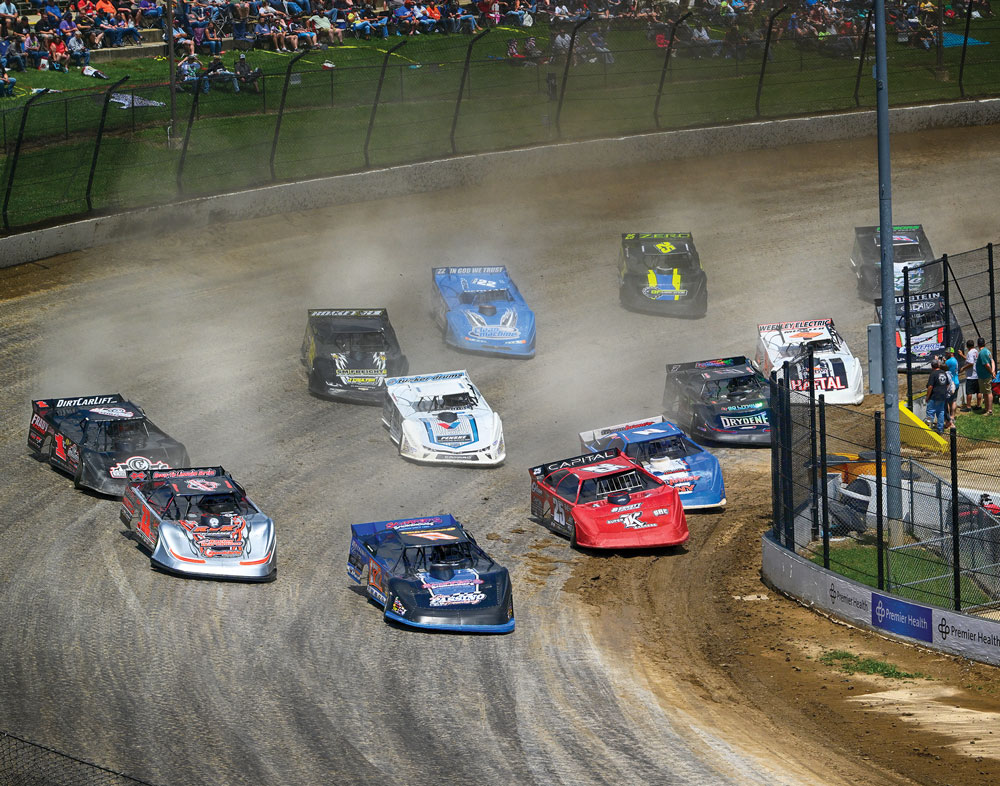
After the local climate, “the make-up of the surface, what the dirt is made of, is critically important,” Carlton said. “We have places here in the South, like Senoia Raceway [in Senoia, Georgia], which has a gray clay mixture that they call gray gumbo. It doesn’t require a lot of moisture to be racy. It’s super slick top to bottom. That’s my favorite kind of racing, when the track slows way, way down and you can race all over it because it’s so slick. Nobody really has an advantage for traction, so you kind of have to race all over it to find where your car handles the best.”
“Because I’ve raced for a long time, most of the tracks that I’m going to I have experience at,” said Johnson, still actively racing at age 67. “So going in, if there’s a Topless Outlaw race at Wartburg, we know that track has a certain type of dirt on it, with a little bit of gravel in it. So it’s going to call for a more aggressive chassis setup, a more aggressive driving style than, say, the Talladega short track. That track is much smaller, so when you go in there you drive with more finesse. You have more traction in the car.”
Johnson said he “really enjoys” running at his local race track near Chattanooga, Tennessee, which is Boyd Speedway in Ringgold. “Those guys work really hard. When racing gets stagnant, they will go out and re-clay the track, shake it up. Those guys out there do a lot to put on a good show and get it done in a timely manner.”
Michael Robinette started the Topless Outlaws Dirt Late Model Series of Tennessee about five years ago as a way to have a class that looked different than the other dirt late models. “When you go to a dirt track now, anywhere you go in the US, they have three to four late model classes—crate, sportsman, supers, limiteds—and they all look like the same cars that just pulled off the track. When we roll onto the race track, the wives and everybody in the grandstands can recognize the difference because we don’t have roofs. We adopted it as our identity. When we’re on the race track, everybody knows that’s us.”
Robinette could describe the surface characteristics of every track his series’ roofless cars race on, including Tazewell Speedway in Tazewell, Tennessee, which “has been a hooked-up race track that has stayed incredibly smooth. One of our drivers, Austin Neely, set a limited track record at Tazewell at the first race last year—an 11:29 on a one-third mile dirt track. That track never rippled up, stayed really fast, and produced good racing. Then you go right down the road to 411 [Motor Speedway in Seymour, Tennessee], and that thing will get black. They call it black ice. They’ll race three-wide around it. From the bottom to the top it’ll be black and just race great.
“Senoia has some kind of dirt on it that’s actually a byproduct of a mining company in Macon, Georgia. They call it black gumbo,” Robinette continued. “That thing is smooth, slick as glass. You can’t use any horsepower. It’s a big, nice race track, wide as it can be, but it’s one of [those] where a crate motor is liable to win a super race because you just can’t use horsepower on it. It puts it back in the driver’s hands.”
“The engine that you choose makes a big difference,” said Carlton. “The slicker the race track is, the less horsepower you want. A guy like Michael Page can run a 525 crate engine at Talladega and Senoia and be just dominant because the race track was so slick. You could not get power to the ground. He had a perfect storm—just enough power that he needed, but he kept from spinning his tires.”
Car counts are “all over the board” in the South, Carlton said, due in part to a certain amount of regional fragmentation. “Guys who race around Senoia, east Alabama, the Dixie region, they kind of just stay in that area. We have a group of cars in the Carolinas, and Florida does its own thing.”
Car counts in the Midwest, “like at Fairbury in Illinois, they’ll have 30 dirt late models at a regular Saturday night show,” Carlton pointed out. “In the Southeast, 30 late models is a dream. We’re lucky to get a full field of 20–24 cars, or close to a full field. When we go to Eldora [Speedway in Rossburg, Ohio], we’ll be in that 60-car range, Brownstown [Speedway in Brownstown, Indiana] the same, but it fluctuates all over the board. When we go to West Virginia, who knows? It could be 28, or we could be 48. It depends on a lot of factors. Like the weather. Everybody’s being smart now, with the economy like it is. If the weather doesn’t look good, they’re probably going to stay home and save the fuel, or stay closer to home to race.”
For the Topless Outlaws, “car counts have been really healthy, averaging around 29,” observed Robinette. “We had two races with 40 cars, which helped our average, but throughout the year our races had 28–29 cars.”
THE HIGH PLAINS
Jerry Hanson started the High Plains Late Model Series in 2016 “to salvage late model racing in the Rocky Mountain region,” he explained. Based in Arvada, Colorado, the series started with six races its first year, with car counts averaging eight and topping out at 15. Last year Hanson put on more than 20 races, “and at our Dave Garmann Memorial race we had 30 cars, the most we’ve had in 25–30 years out in this area.”
How does he explain the growth? “Being supportive of the racer is the biggest difference you’re going to find in our region from some others. We don’t have five tracks within an hour or a couple of hours of each other. There may be a five- to six-hour drive between tracks.” So Hanson fosters an atmosphere of fun and camaraderie among his participants. “If you talk to the racers, it’s like a big family. It doesn’t matter where you come from, if a racer goes down, everybody’s pitching in to try and get him back out on the track.” Hanson puts on multiple cookouts for the racers during a season “as a way to say thank you for your devotion.” And if he finds he has extra money, “I just put it out there. In a couple of different cases, we had a track that was way overwatered, and I gave everybody an extra $30 to spend extra time rolling in the track and getting it race ready.”
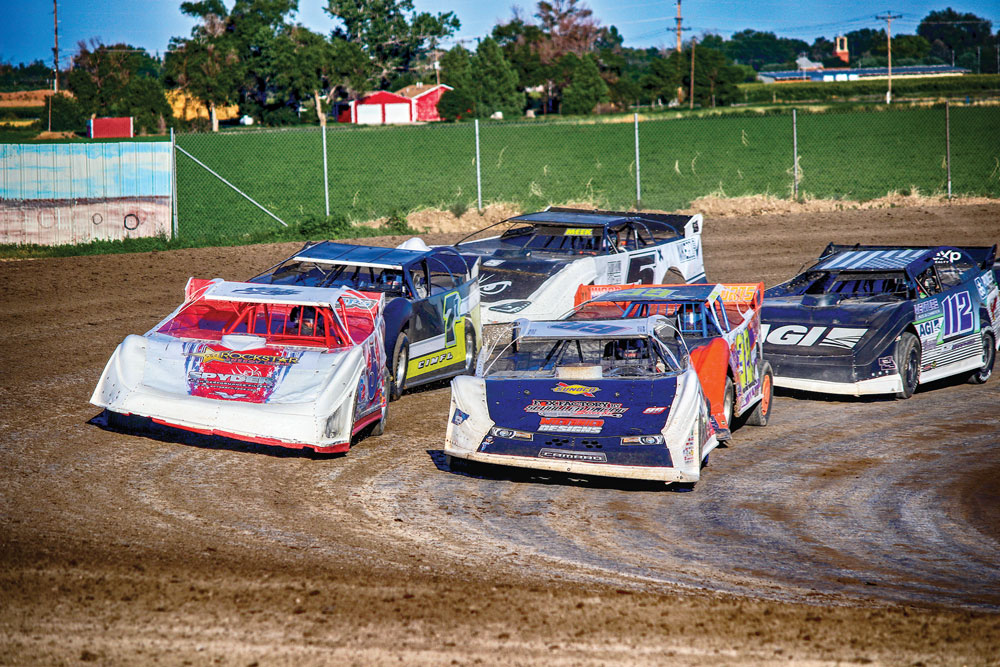
The High Plains classes “mirror Malvern Bank, but not as detailed,” Hanson explained. “We are a run whatever you have, but you’ll have to run a restrictor plate, and that depends on cubic inches. I have everything from a LS7 to a 604 crate to a Pro Power 430 running with us. We have guys that run IMCA spec motors, WISSOTA spec motors, and CP525s. It’s an inclusive engine package on restrictor plates.”
Due to the region’s dry climate and elevation, “our tracks will predominantly go dry slick and take rubber, depending on the weather,” Hanson said. “Our clay here is more a sandy abrasive clay than back East.”
Even with his growing car counts, Hanson realizes “there are still a lot of cars here that aren’t being raced. In the Denver metro area, I would speculate there are 30 cars. Some of them are race ready, some wouldn’t take too much to get them race ready.” He is working to recruit them, “but out here there’s so much more to do, with the lakes, mountains, camping with family. There are other things to do than just racing.”
“Competition for the dollar is something we battle,” Carlton said, no matter what the region. “We did a promoter’s roundtable recently where we realized race tracks are not competing with each other as much as they are competing with outside interests—bowling, baseball, football.
“One of the things we talked about at that roundtable is we need to improve the fan experience,” Carlton said. “Work toward having more satisfaction, shorter programs that finish at a decent hour, higher quality concession foods, creature comforts, better seating, good bathrooms. There’s just competition at every corner we turn.”
Zuver agreed with Carlton, adding the “biggest thing” he learned as a former track owner is “you do not race on opening day of NFL football.”
SOURCES
FloRacing Night in America Series
floseries.com
High Plains Late Model Series
facebook.com/HighPlainsLateModels/
Jay’s Automotive ULMS Racing Series
ulmsracing.com
Ronnie Johnson
facebook.com/RJ5ChattanoogaFlash/
Bobby Pierce
bobbypierceracing.com
Topless Outlaws Dirt Late Model Series
toplessoutlaws.com
Ultimate Super Late Model Series
ultimatesupers.com
 MEMBERSHIP LOGIN
MEMBERSHIP LOGIN JOIN PRI
JOIN PRI
